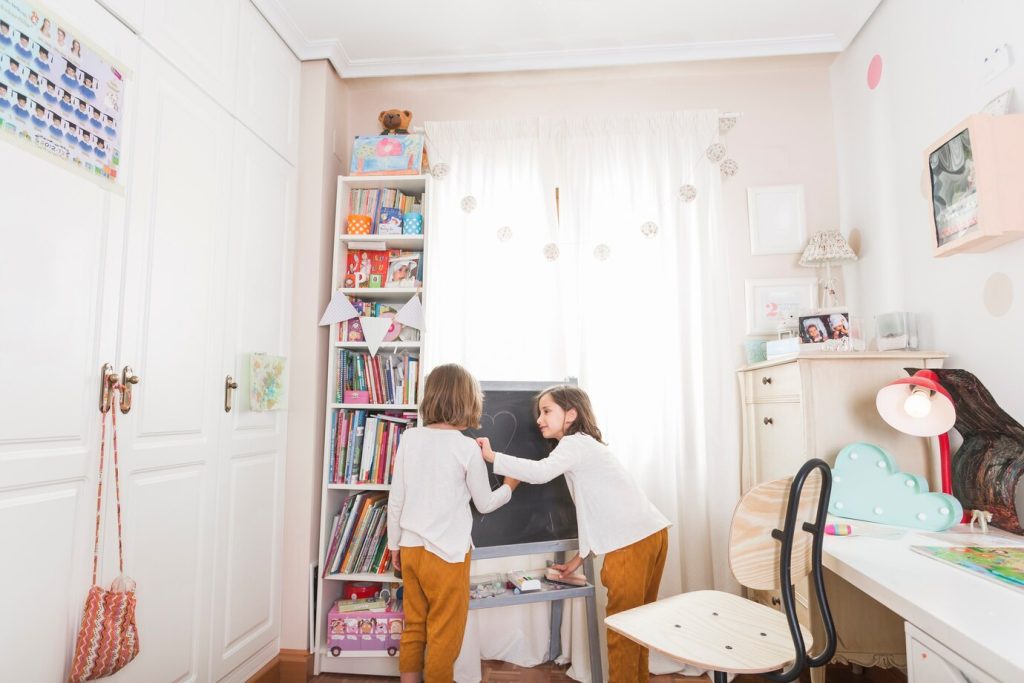Designing a child’s room is a magical endeavor. It’s not just about creating a space to sleep and play; it’s about crafting a world where imagination knows no bounds, where dreams take flight, and where every corner sparks joy and wonder. From selecting colors to choosing decorative items, every decision plays a role in shaping this enchanting sanctuary. Let’s dive into the key elements of designing a child’s room that ignites their imagination and fosters creativity.
Design Concept:
The foundation of a child’s room begins with a captivating design concept. Whether it’s a whimsical forest, a cosmic adventure, or a fairytale castle, the theme sets the stage for the entire room. Consider your child’s interests, passions, and personality when choosing a theme.
For example, if your child loves space, you could opt for a cosmic theme with celestial murals, glow-in-the-dark stars, and rocket ship accents. If they’re enchanted by nature, a forest theme with tree-shaped shelves, floral wallpapers, and woodland creature plush toys could transform their room into a magical woodland retreat.

Color Selection:
Colors play a crucial role in evoking certain moods and emotions, making them an essential aspect of designing a child’s room. While bold and vibrant colors can energize and stimulate creativity, soft pastels can create a soothing and calming atmosphere.
For a gender-neutral approach, consider a palette of soft greens, blues, and yellows. These colors promote relaxation while still offering a playful vibe. Alternatively, you can embrace bold hues like vibrant reds, electric blues, and sunshine yellows to infuse the room with energy and excitement.
Decorative Items:
Decorative items are the finishing touches that bring the room to life and tie the entire design together. From furniture to wall art to accessories, every piece should complement the chosen theme and color scheme.
Furniture: Choose furniture that is both functional and stylish. Opt for pieces that can grow with your child, such as convertible cribs that transform into toddler beds, and adjustable shelving units that can accommodate their evolving interests and hobbies.
Wall Art: Wall art is a fantastic way to add personality and character to the room. Consider framed prints, wall decals, or even a custom mural that reflects the chosen theme. You can also incorporate interactive elements like a chalkboard wall or a magnetic board where your child can unleash their creativity.
Textiles: Soft furnishings like rugs, curtains, and bedding are opportunities to infuse the room with texture and color. Choose fabrics that are cozy and durable, and don’t be afraid to mix and match patterns to add visual interest.
Accessories: From plush toys to throw pillows to decorative lamps, accessories are the little details that make the room feel complete. Look for items that tie into the theme and encourage imaginative play, such as stuffed animals, dress-up costumes, and themed puzzles or games.
Conclusion:
Designing a child’s room is a labor of love, a chance to create a space where imagination reigns supreme and every corner holds the promise of adventure. By carefully selecting a theme, choosing a color palette, and curating decorative items, you can transform a simple room into a whimsical wonderland that sparks joy and fosters creativity for years to come.



